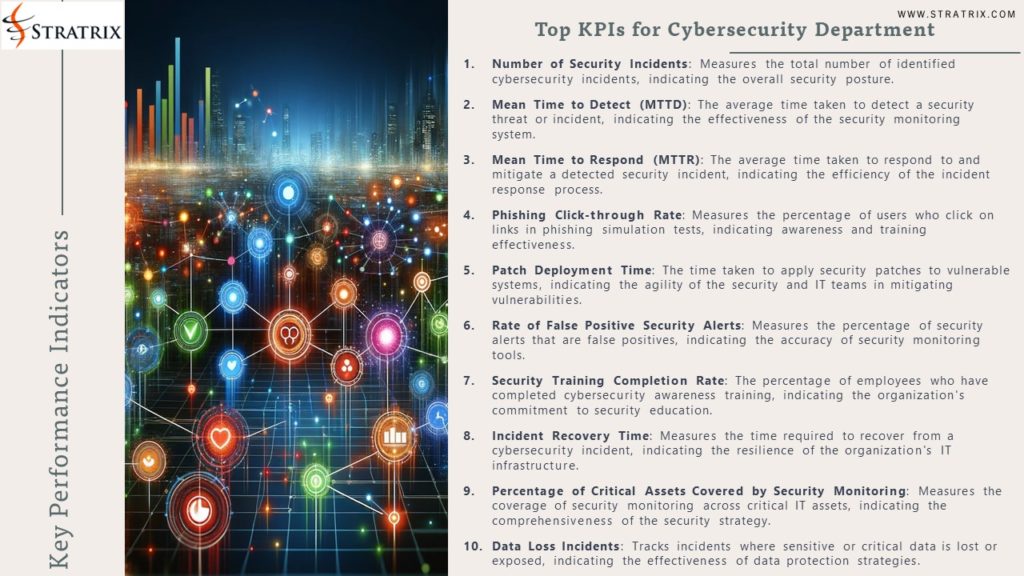Top KPIs for Cybersecurity Department
1.Number of Security Incidents: Measures the total number of identified cybersecurity incidents, indicating the overall security posture.
2.Mean Time to Detect (MTTD): The average time taken to detect a security threat or incident, indicating the effectiveness of the security monitoring system.
3.Mean Time to Respond (MTTR): The average time taken to respond to and mitigate a detected security incident, indicating the efficiency of the incident response process.
4.Phishing Click-through Rate: Measures the percentage of users who click on links in phishing simulation tests, indicating awareness and training effectiveness.
5.Patch Deployment Time: The time taken to apply security patches to vulnerable systems, indicating the agility of the security and IT teams in mitigating vulnerabilities.
6.Rate of False Positive Security Alerts: Measures the percentage of security alerts that are false positives, indicating the accuracy of security monitoring tools.
7.Security Training Completion Rate: The percentage of employees who have completed cybersecurity awareness training, indicating the organization’s commitment to security education.
8.Incident Recovery Time: Measures the time required to recover from a cybersecurity incident, indicating the resilience of the organization’s IT infrastructure.
9.Percentage of Critical Assets Covered by Security Monitoring: Measures the coverage of security monitoring across critical IT assets, indicating the comprehensiveness of the security strategy.
10.Data Loss Incidents: Tracks incidents where sensitive or critical data is lost or exposed, indicating the effectiveness of data protection strategies.


